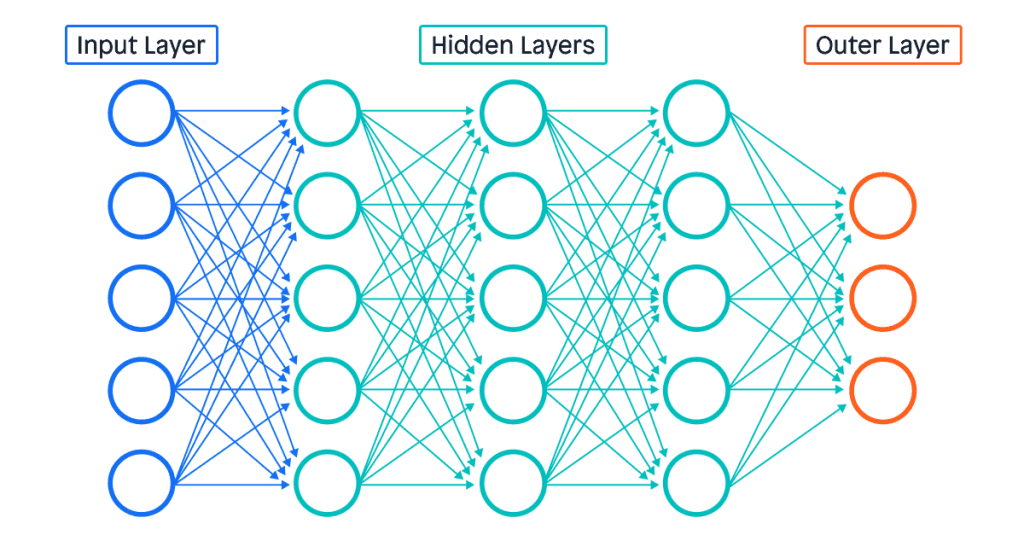In the world of Artificial Intelligence (AI), models act as the virtual brains. Trained on data and algorithms, these models learn and evolve, making them valuable tools for various tasks. This guide dives into what AI models are, how they’re created, different types, and common applications.
What are AI Models?
AI models are essentially software programs trained on data to perform specific tasks. Imagine them as students constantly learning from information. The more data they process, the better they become at tasks like:
- Analyzing large datasets
- Identifying patterns
- Predicting future outcomes
- Generating creative content
Building an AI Model
Data scientists are the masterminds behind crafting AI models. They develop algorithms, which are step-by-step instructions that guide the model. These algorithms are then trained on data, transforming them into functional AI models.
Artificial Neural Networks (ANNs): Learning Like the Brain
ANNs are a specific type of algorithm modeled after the human brain. They consist of interconnected nodes (artificial neurons) that process information in a similar way to how our brains work. This structure allows them to excel at tasks requiring pattern recognition, such as:
- Image and speech recognition
- Summarizing documents
- Natural Language Processing (NLP)
- Complex decision-making
Search Engine Algorithms: A Real-World Example
A well-known example of an algorithm in action is Google Search. When you enter a query, Google’s search algorithm analyzes billions of web pages to deliver the most relevant and helpful results. As user behavior and search trends evolve, so too does the algorithm to maintain its effectiveness.
Exploring Different AI Model Types
There are various AI model types, each with its strengths and applications. Here’s a breakdown of the most common ones:
- Machine Learning (ML): A subset of AI where models learn from data.
- Supervised Learning: The most common type, trained with labeled data (data with predefined categories). Great for tasks like classification and prediction. [Backlink to a resource on supervised learning, e.g., scikit-learn documentation on supervised learning: https://scikit-learn.org/stable/supervised_learning]
- Unsupervised Learning: Discovers patterns in unlabeled data, allowing for data exploration and grouping.
- Deep Learning: A powerful subset of ML that uses complex neural networks to identify intricate patterns in data, often used for tasks like image recognition and natural language processing. [Backlink to a resource on deep learning, e.g., TensorFlow tutorials on deep learning: https://www.tensorflow.org/tutorials]
Deep learning models
Deep learning is an advanced type of ML that learns to identify complex patterns in text, images, and sounds. With deep learning, data is processed and classified through layers, and each layer has a role to play in the processing of input data.
Here’s a quick look at the different types of layers in a deep learning neural network:

Source: https://www.mendix.com/blog/what-are-the-different-types-of-ai-models/
Machine Learning in Action: Teaching AI about Flowers
Let’s use flower identification as an example. To train a supervised learning model, we’d provide a dataset of labeled images (each flower with its name). The model analyzes this data, learning to differentiate flower types based on characteristics. Eventually, it can identify flowers in unseen images with increasing accuracy.
Common AI Models and Applications
The world of AI models is vast, with models for various purposes. Here are a few examples:
- Common Machine Learning Models:
- Linear Regression: Predicts continuous values (e.g., house prices based on size and location).
- Logistic Regression: Classifies data into two categories (e.g., spam detection).
- Decision Trees: Tree-like models used for classification and prediction tasks.
- Common Deep Learning Models:
- Convolutional Neural Networks (CNNs): Excellent for image processing tasks like classification and object detection.
- Recurrent Neural Networks (RNNs): Handle sequential data like text and time series, often used for language modeling and machine translation.
- Long Short-Term Memory Networks (LSTMs): A type of RNN capable of learning long-term dependencies in data sequences.
Conclusion
AI models are a transformative technology with vast potential. By understanding their capabilities and different types, you can leverage their power for various applications and contribute to the ever-evolving field of Artificial Intelligence.

